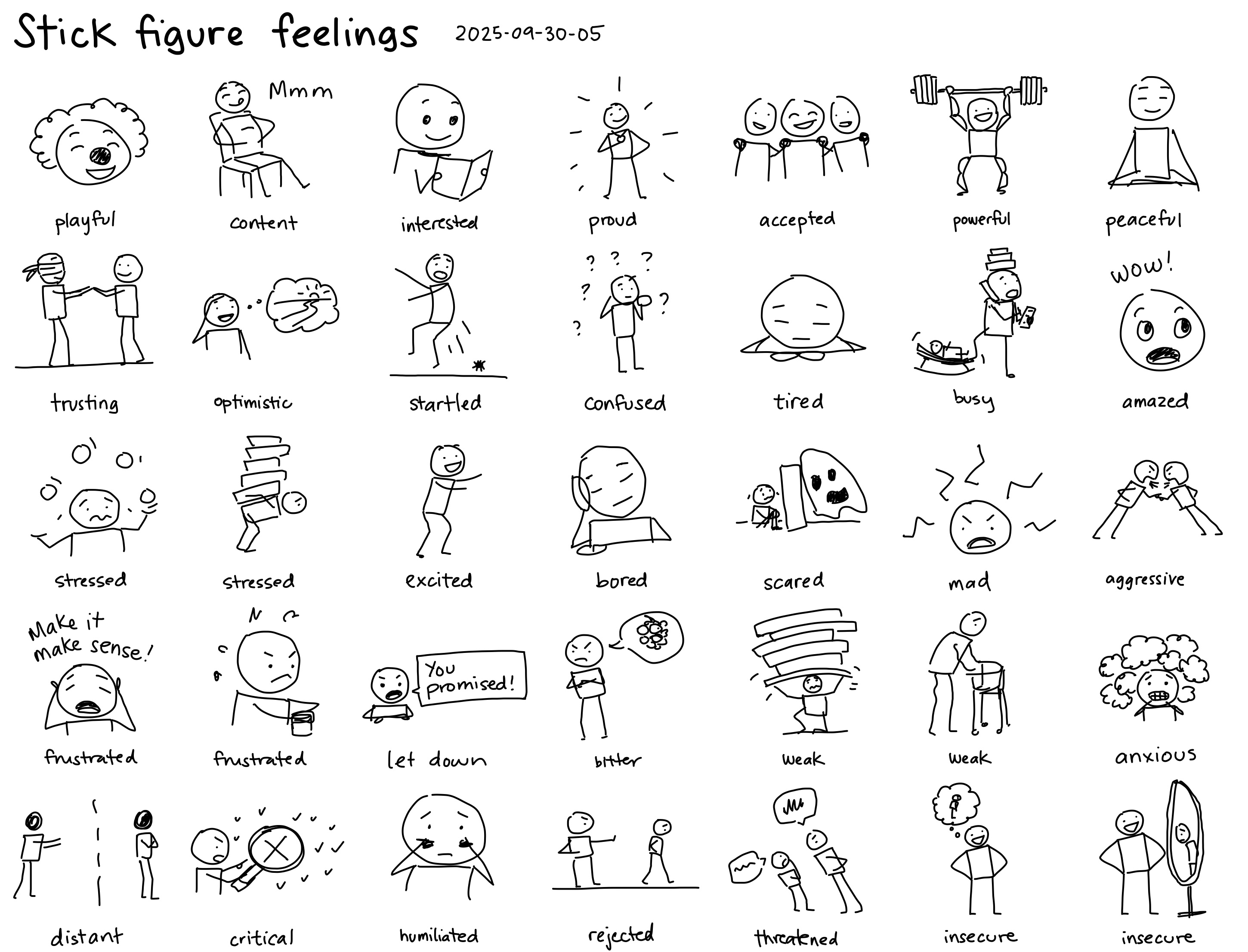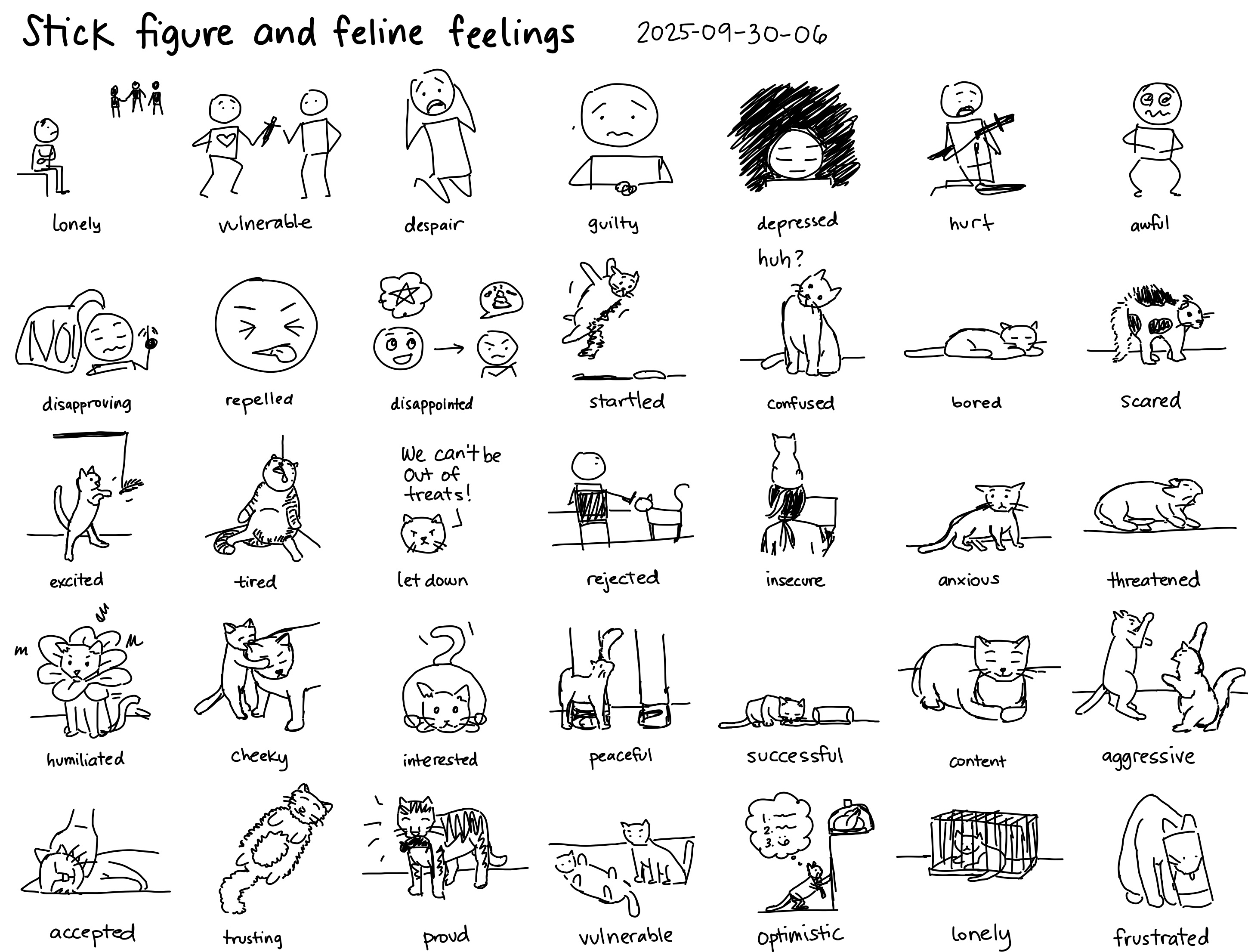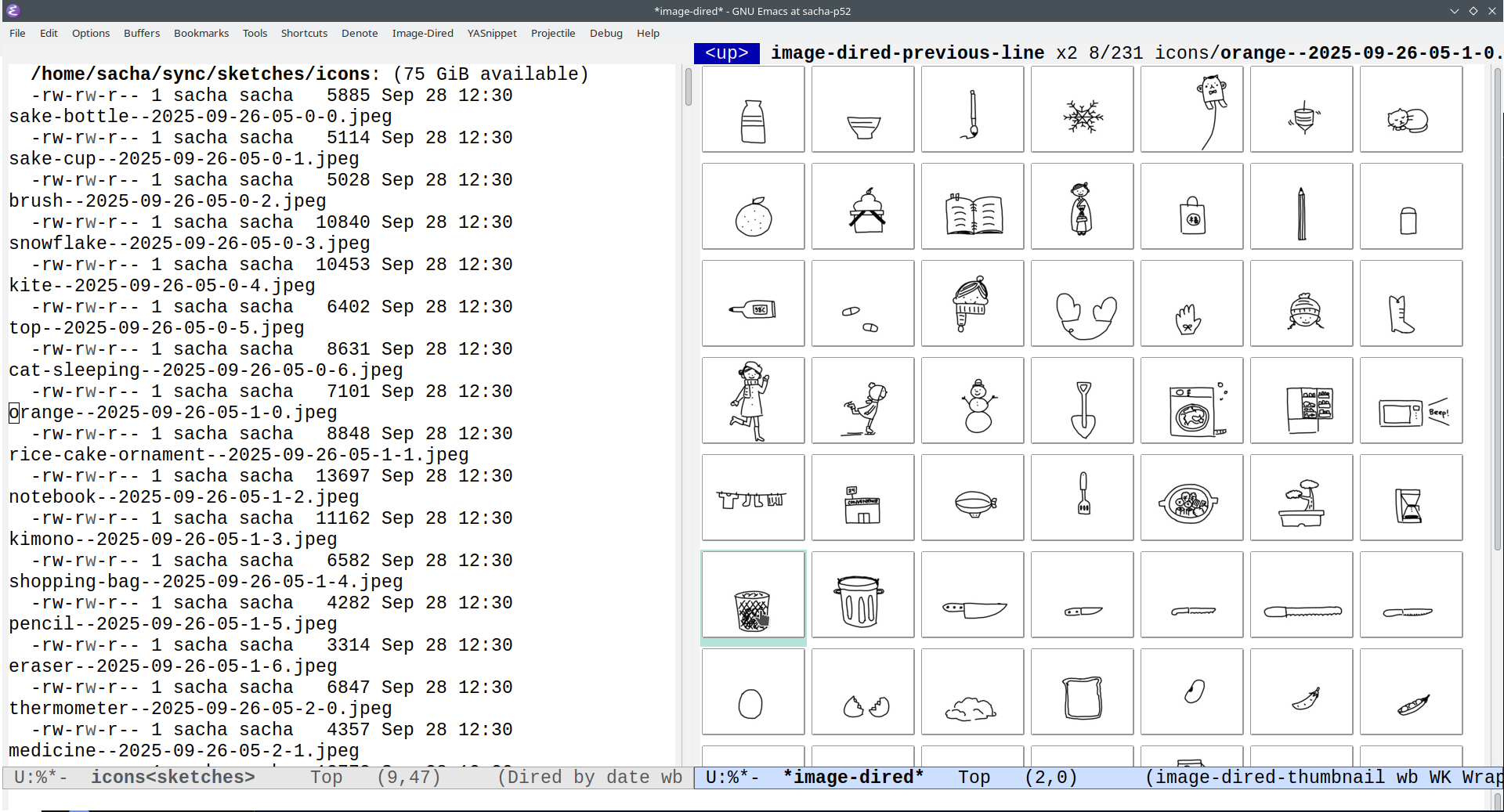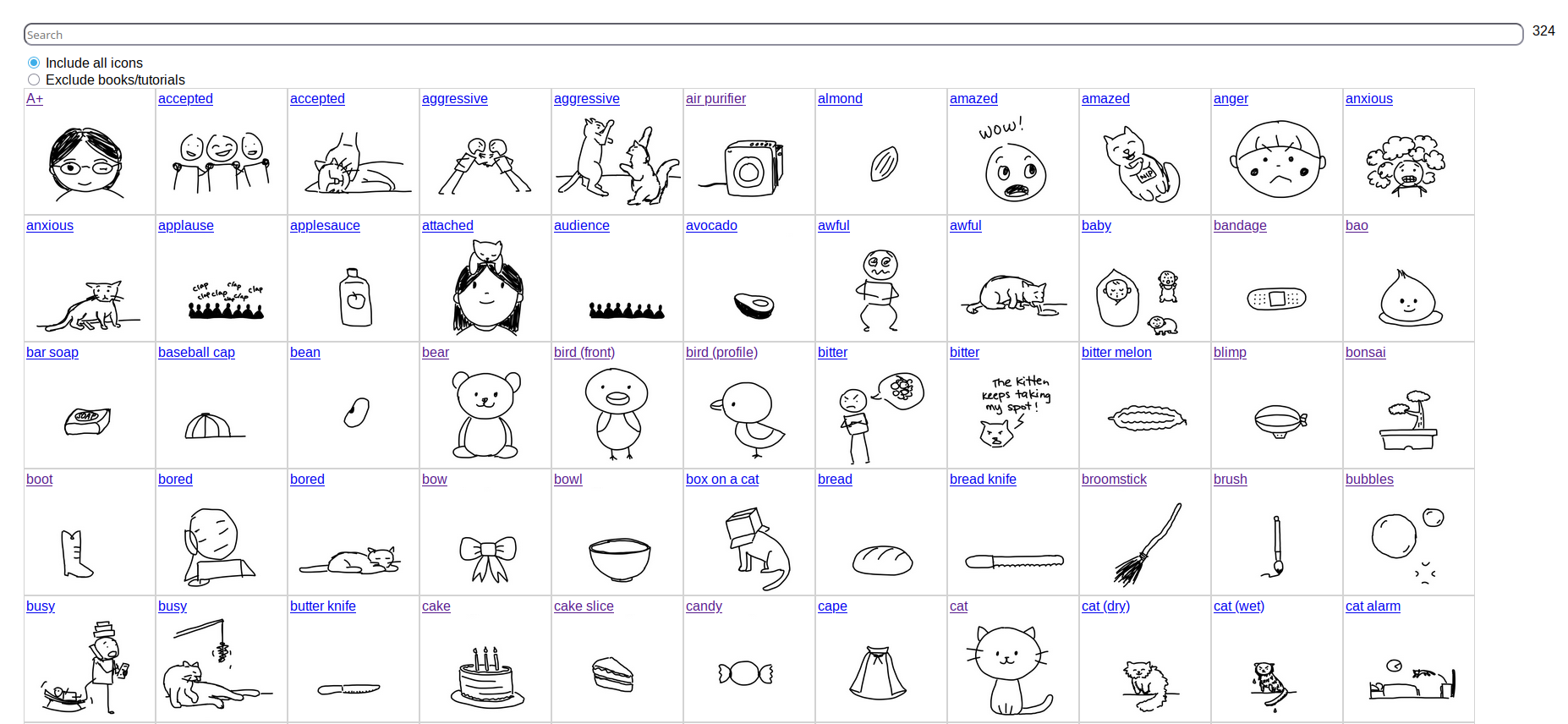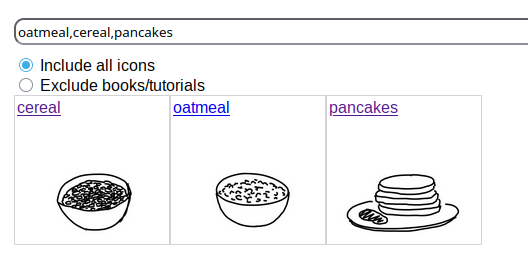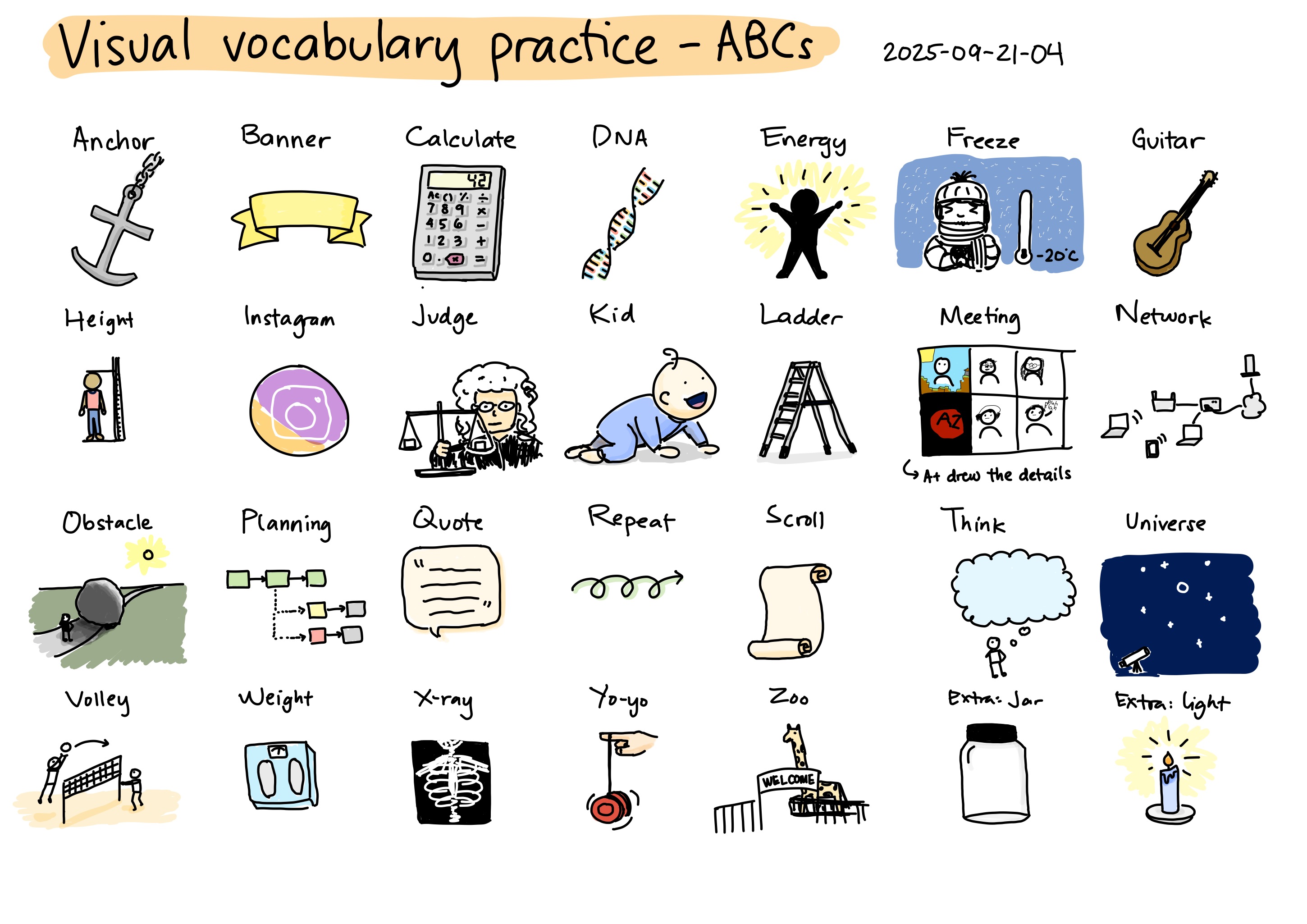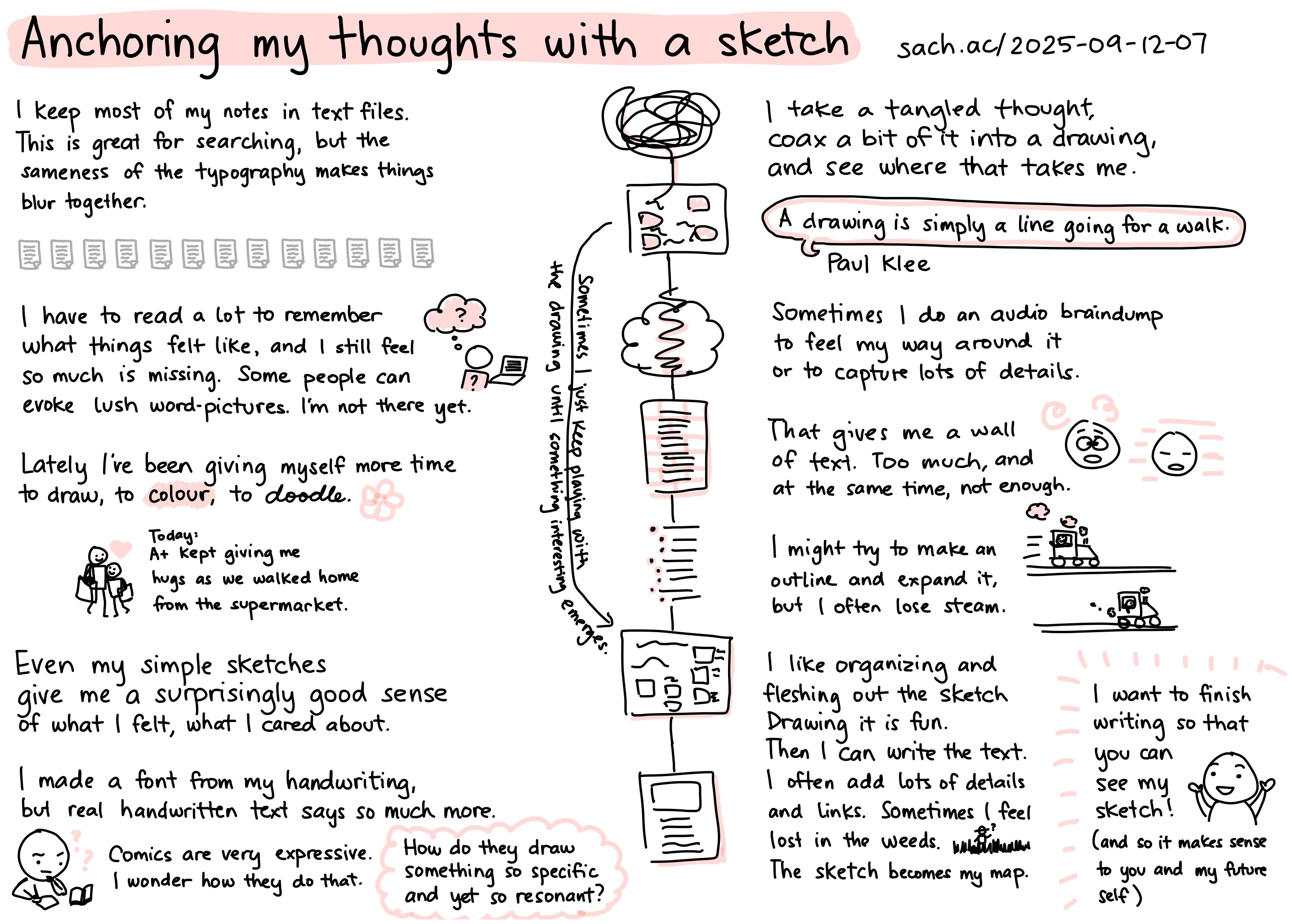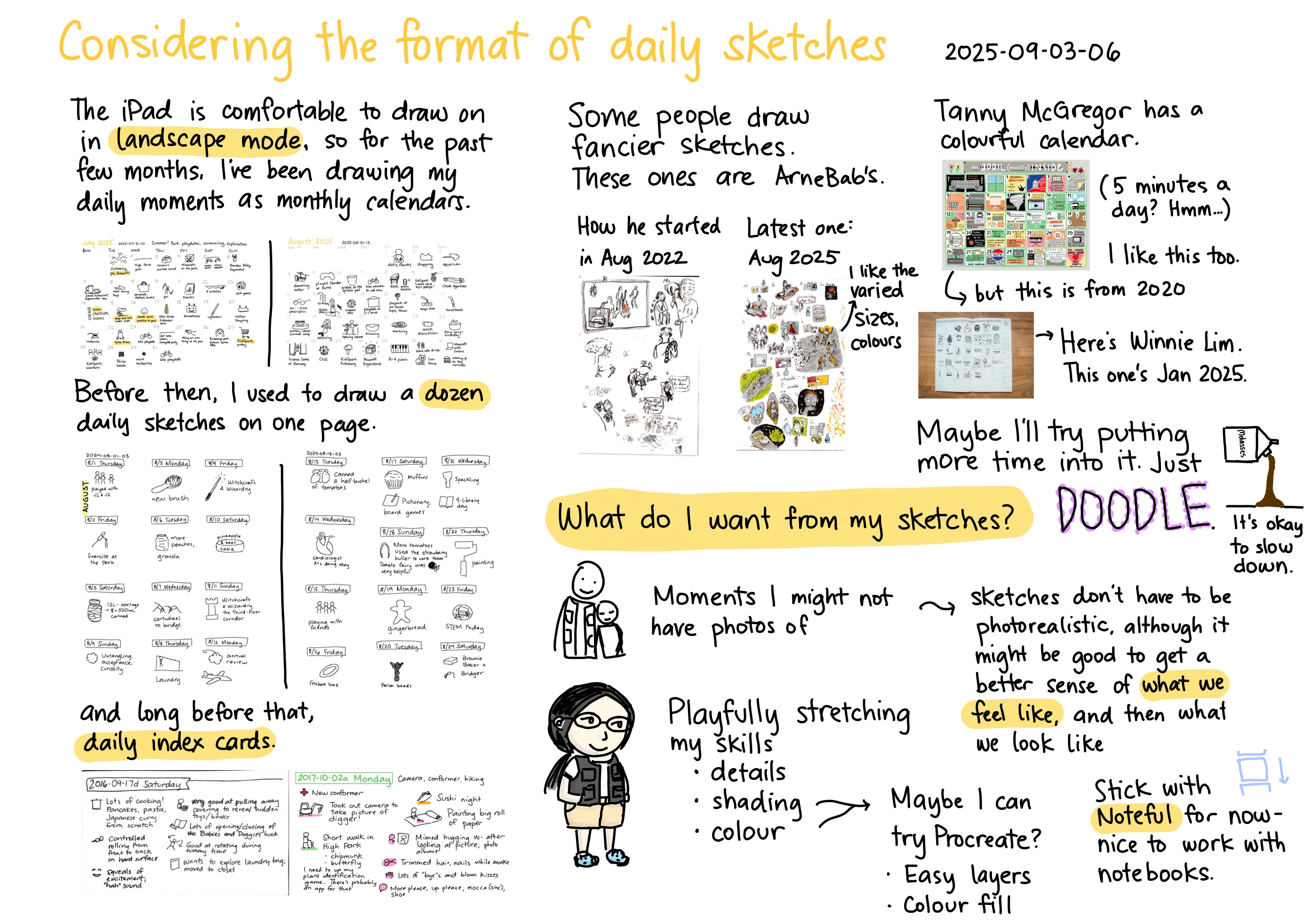Drawing trees
| drawingFollowing the tips in How to draw when you don't have time by Javi can draw!, I have been drawing trees. The video is 6.5 minutes long so it's easy to fit in. From the video:
Your main goal is to create a habit of drawing for drawing's sake.
Here are some of my trees:
Text from sketch
Trees sachachua.com/2025-10-20-07
- cypress tree
- pine tree
- oak tree
- spruce tree
- baobab tree
- tree
- tree
- tree
- tree
- tree
- tree
- tree
- tree
- willow tree
- tree
- tree
- tree
- tree
- tree
- tree
- tree
- tree
- tree
- tree
- tree
- tree
- tree
- tree
- tree by A+
- tree
- tree
- tree
- birch tree
- mango tree
- banana tree
Or in the little icon collection I've been building: trees.
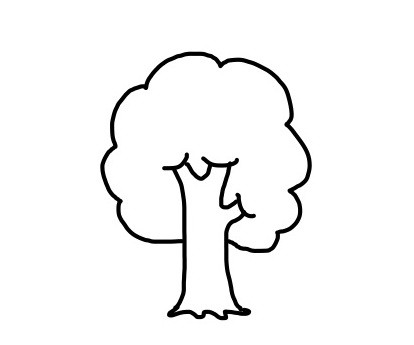
I think my favourite simple tree is this one. I like the way it gives me a little bit of a feeling of leaves being in front or behind, and it looks like something I can get the hang of drawing quickly.
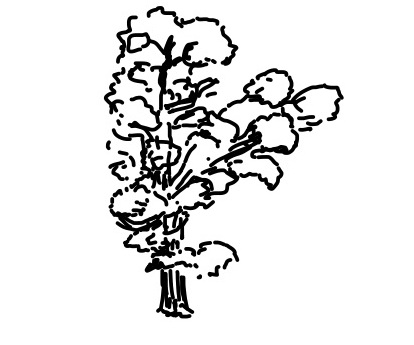
My favourite tree drawn from life is this one. I can think about where I was sitting when I drew it.
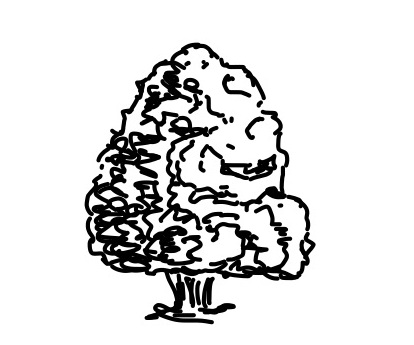
It's hard to pick my favourite from a tutorial or a reference photo. Maybe this one. I like the way it has light and dark.
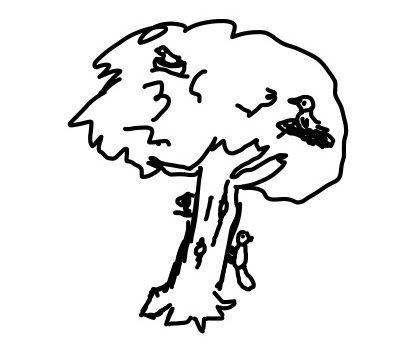
A+ drew a tree too.
A number of related tutorials and references:
- How to Draw a Tree – Step by Step Drawing Tutorial - Easy Peasy and Fun
- How to Draw a Tree in 5 Easy Steps | Skip To My Lou
- How to Draw a Tree Real Easy - YouTube
- How to Draw Cartoon Trees with Easy Step by Step Drawing Tutorial – How to Draw Step by Step Drawing Tutorials
- How to draw BAOBAB TREE with easy - YouTube
- Tree Drawing Ideas to Spark Your Creativity - Beautiful Dawn Designs
- Easy Tree Drawing » How to draw a Tree
- How To Draw Trees
- The Oldest Tree in the World | Trees Atlanta
I found the video via Mike Rohde's Sketchnote Lab post for October. Looking forward to drawing more trees!

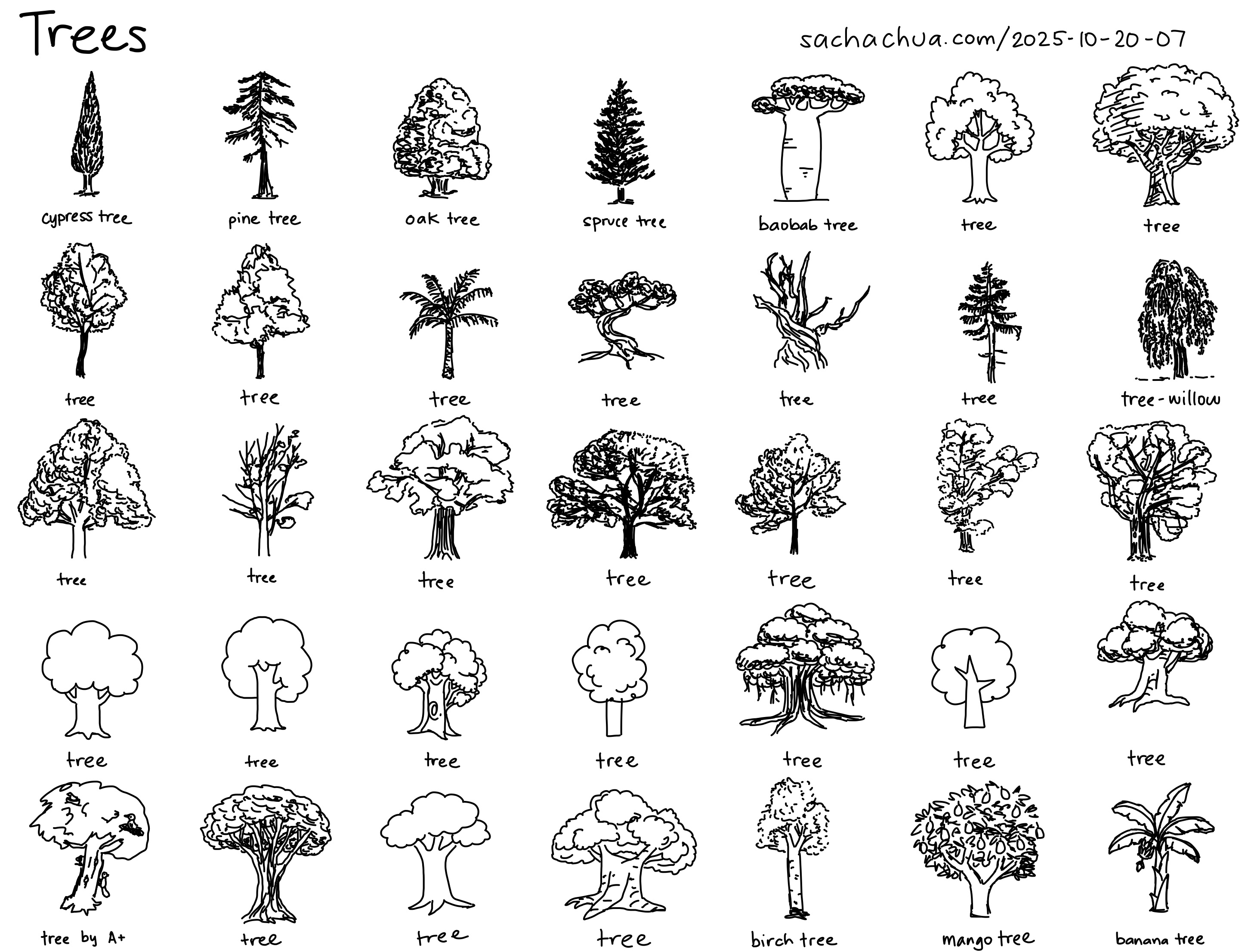
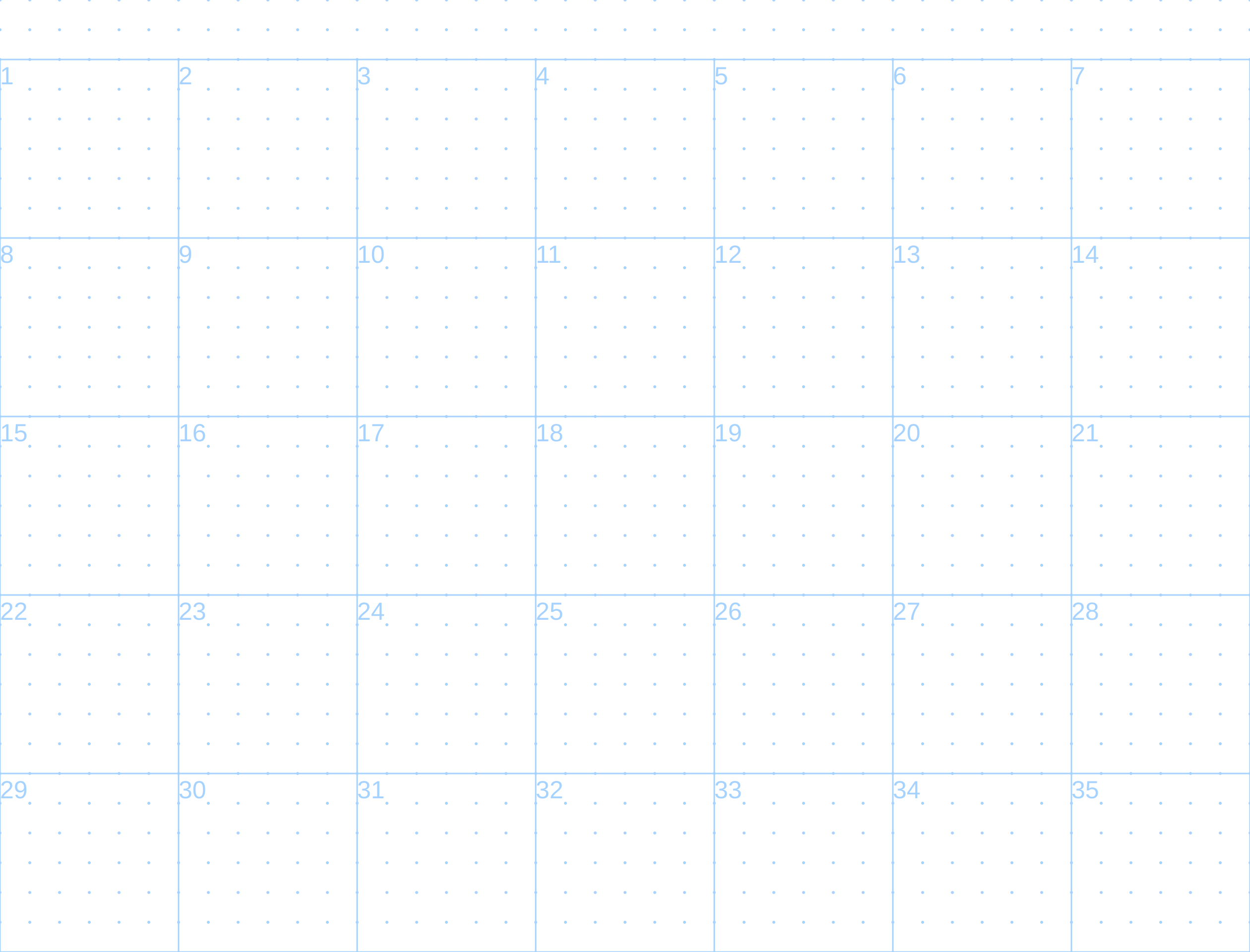
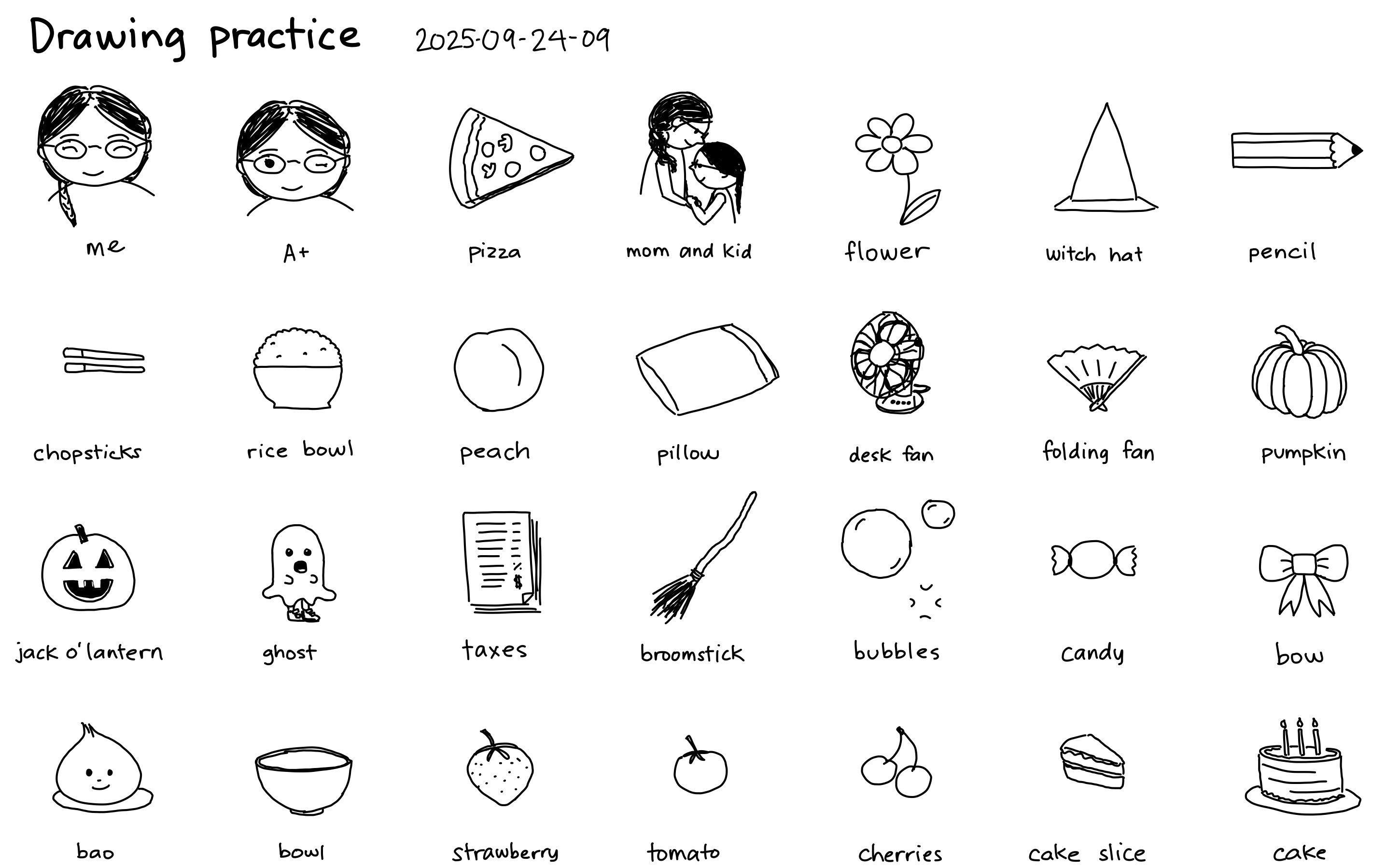
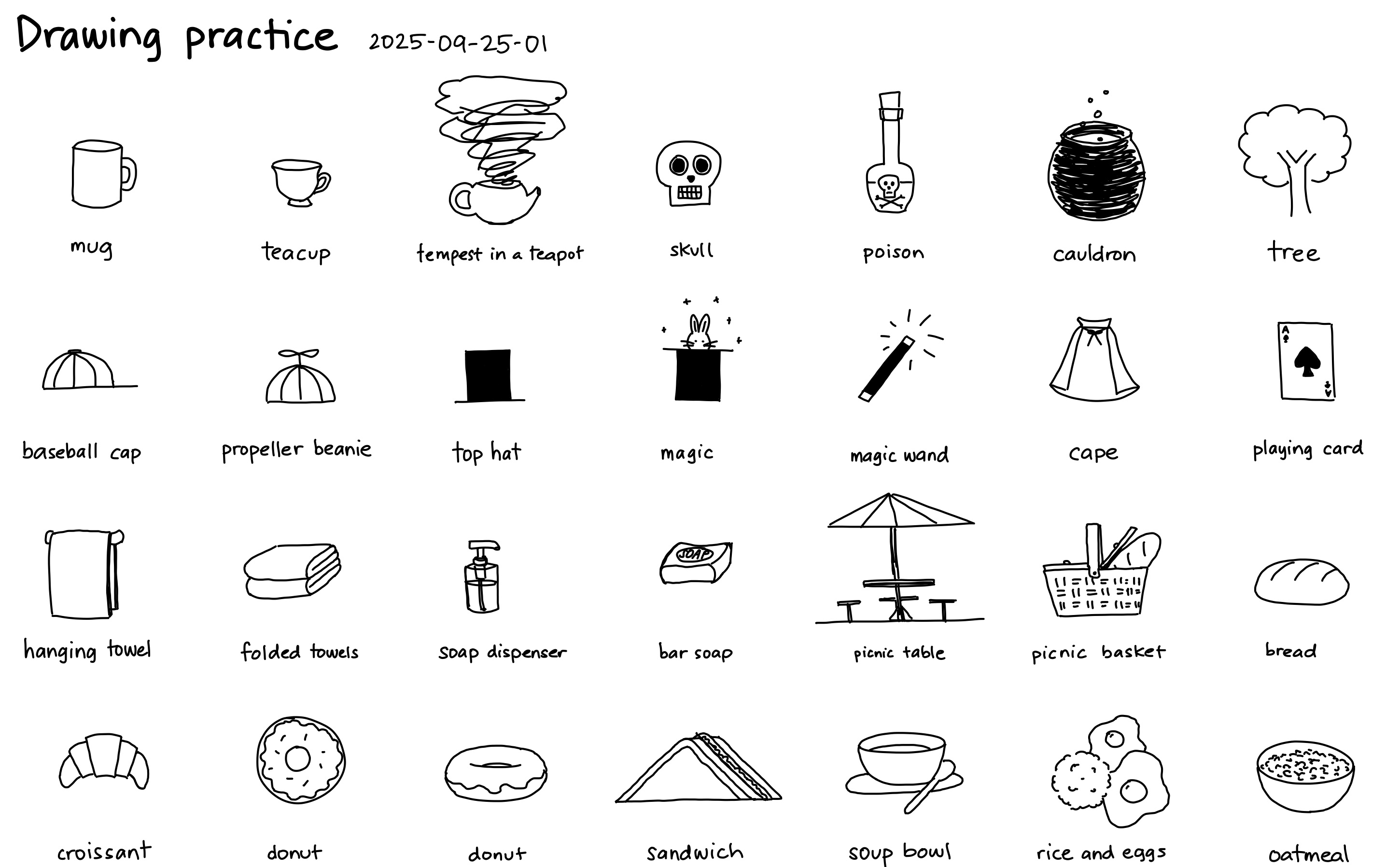
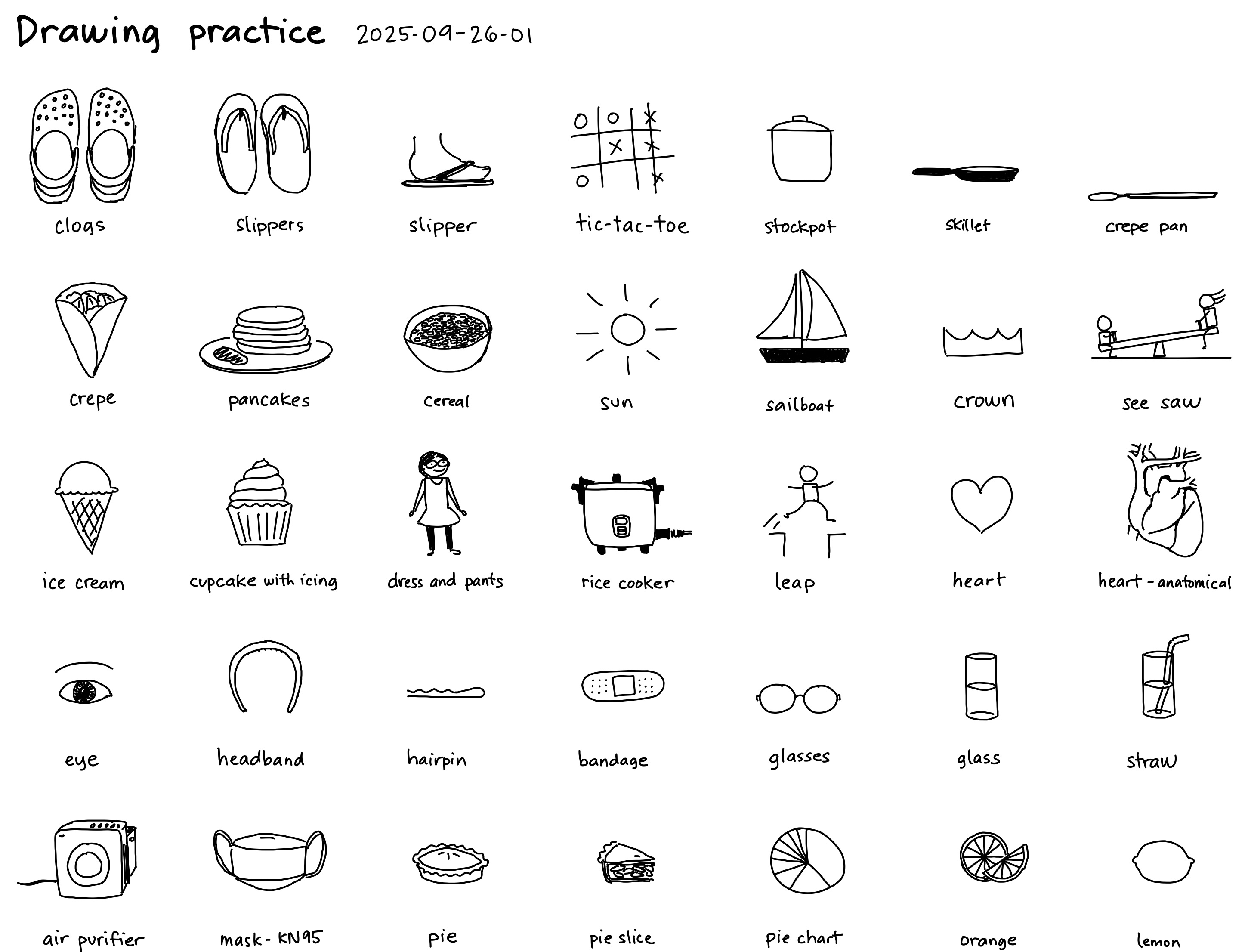
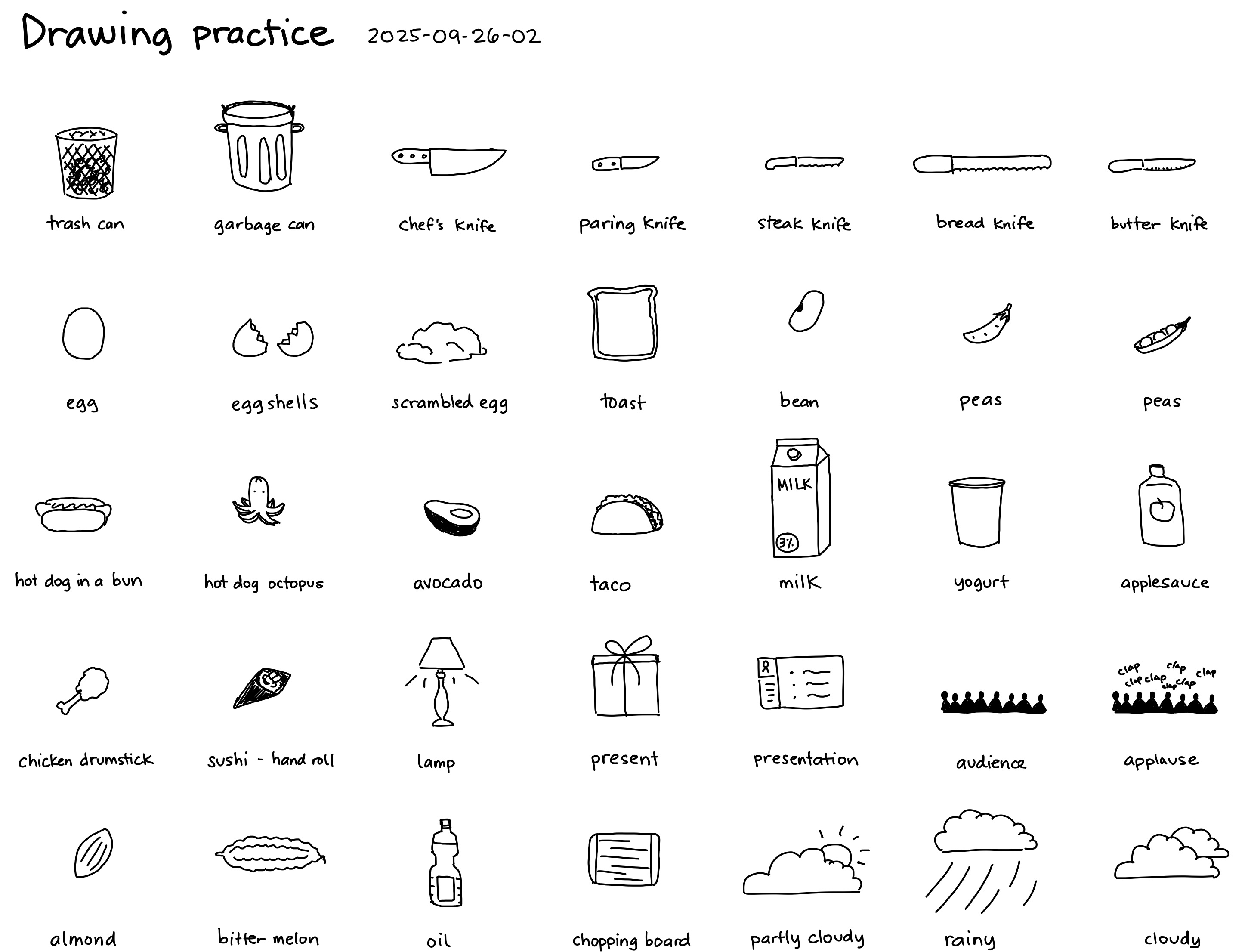
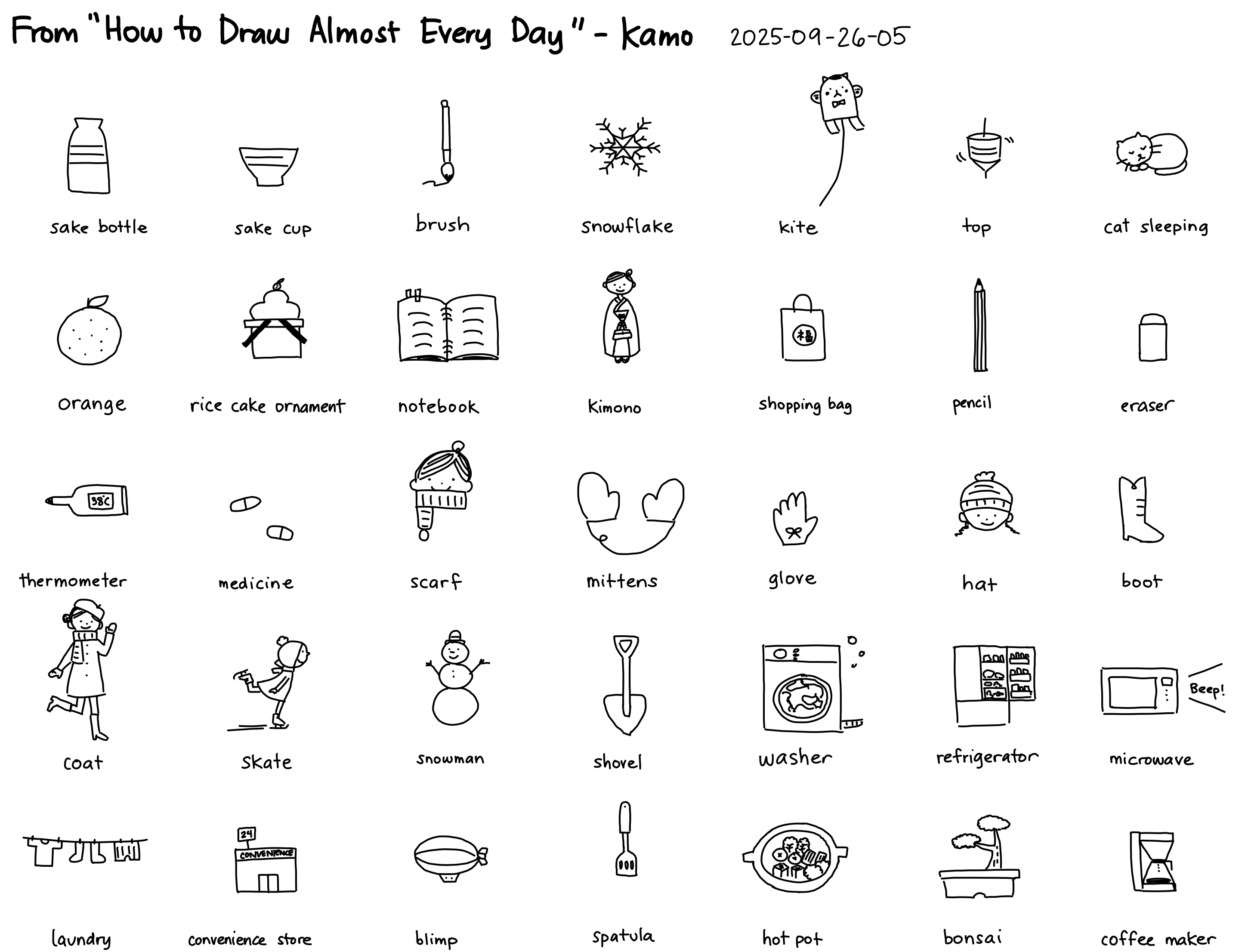
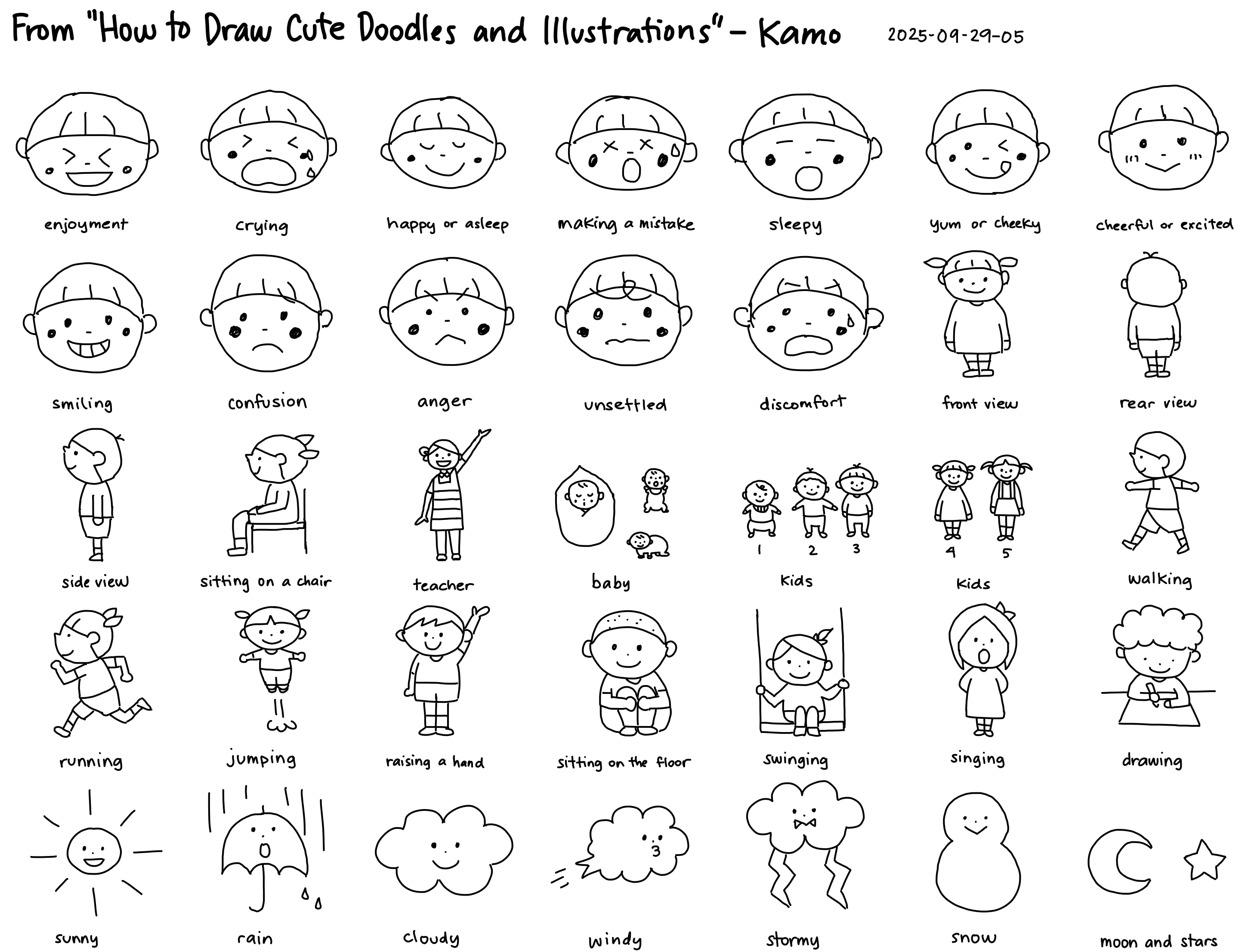%20--%20drawing%20icons.jpeg)
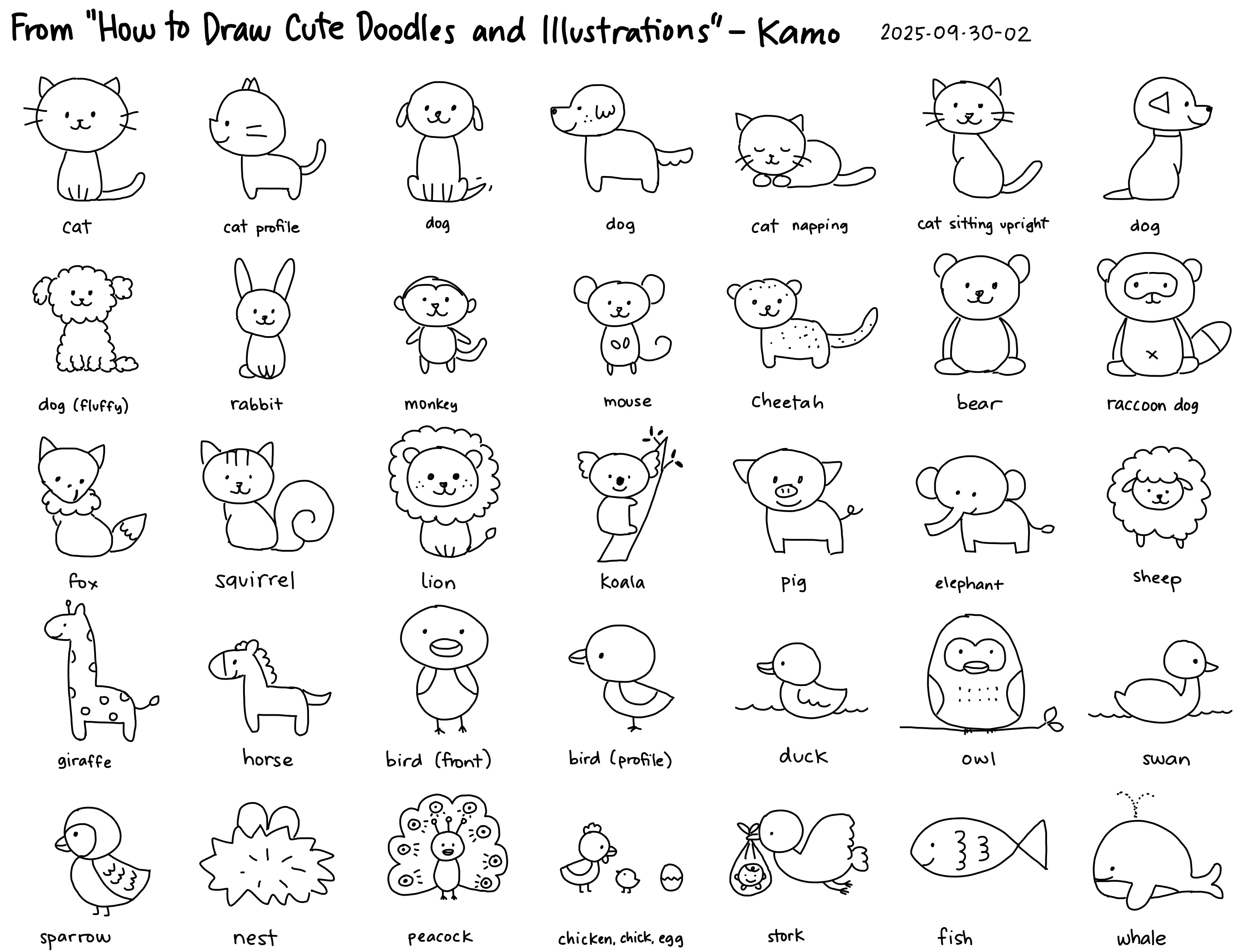%20--%20drawing%20icons.jpeg)
